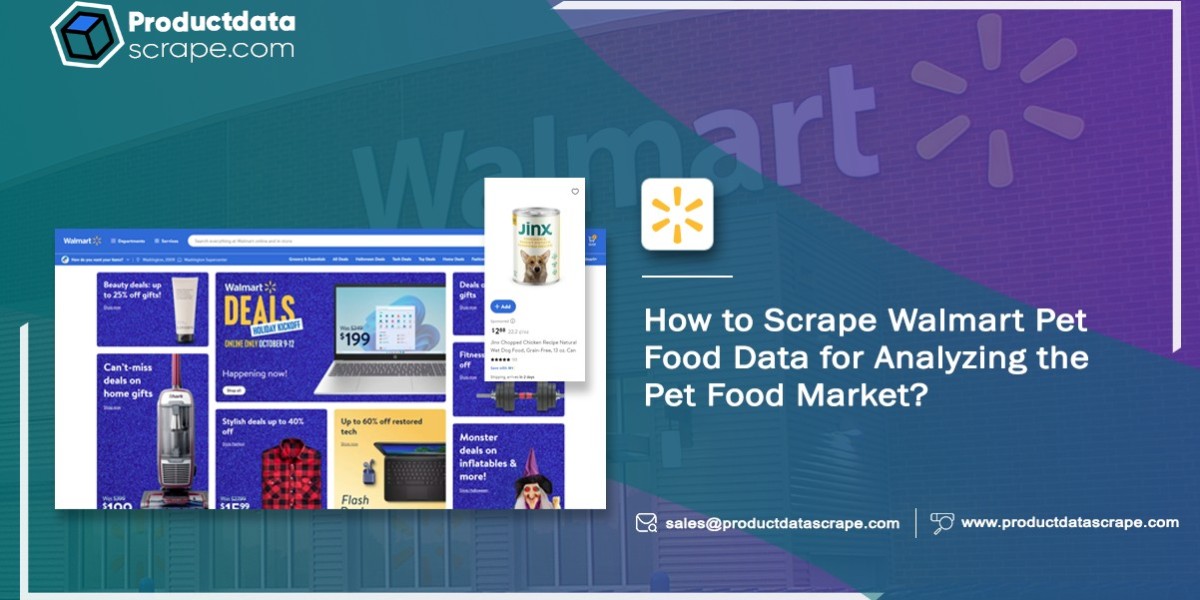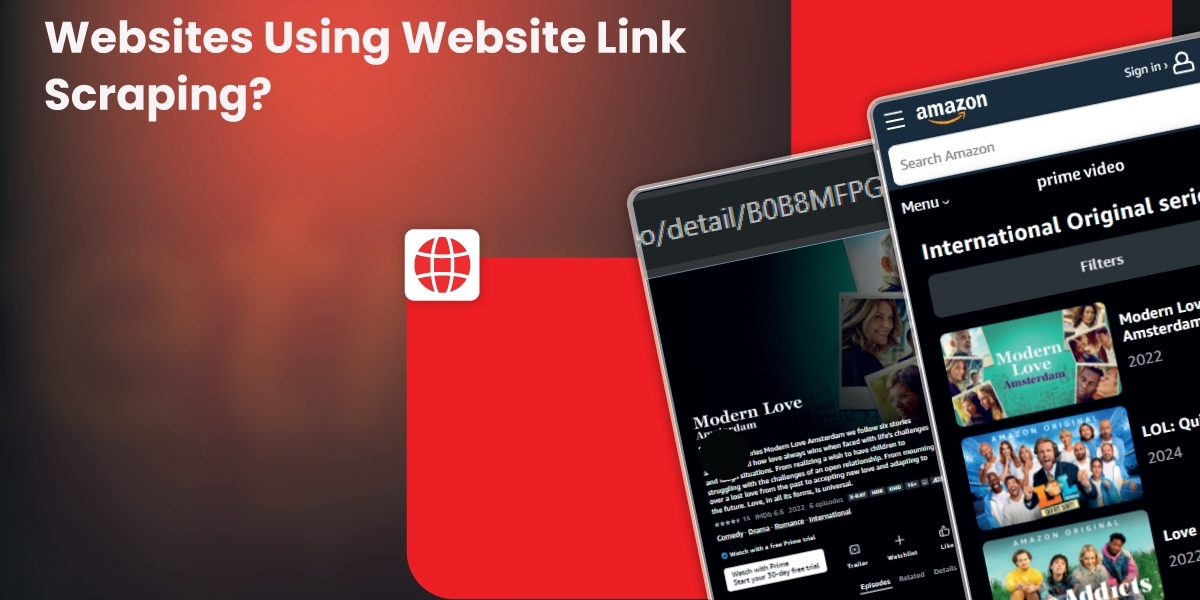How to Scrape Walmart Pet Food Data for Analyzing the Pet Food Market?
Oct 13, 2023
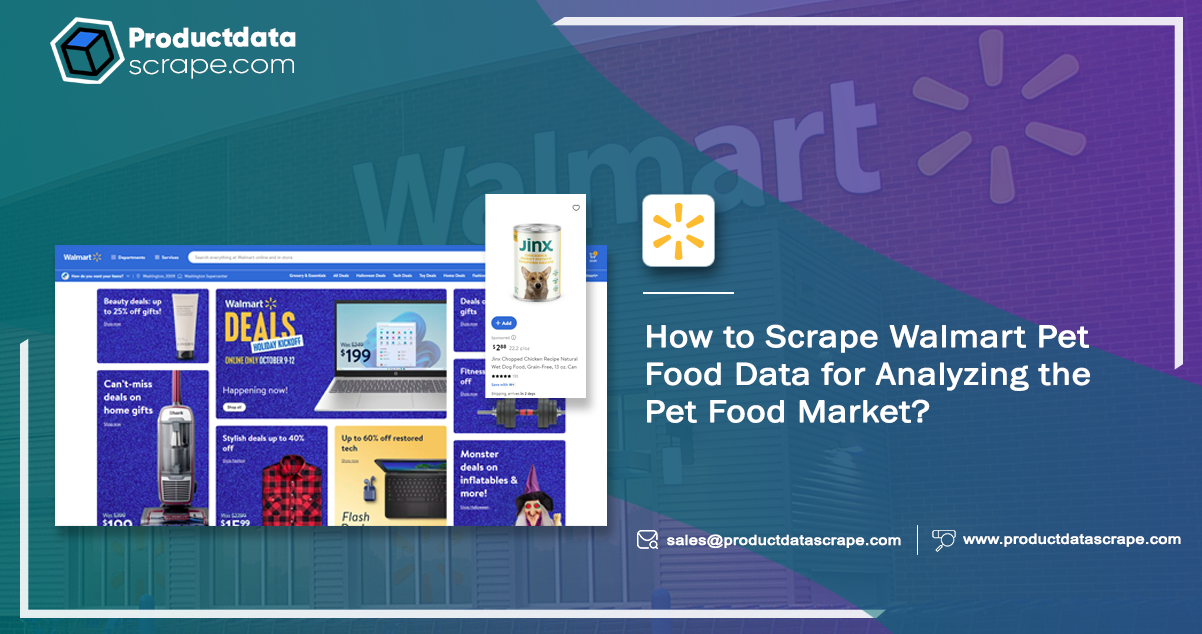
In the contemporary digital landscape, data stands as a cornerstone of value, catering to businesses, researchers, and consumers' needs. For individuals dedicated to the welfare of their pets and pet food retailers aiming to stay ahead in a competitive market, gaining a profound understanding of the pet food industry is paramount. To this end, harnessing the power of web scraping from e-commerce giants like Walmart emerges as a crucial tool.
By scraping data from retail websites, we unlock a treasure trove of insights encompassing diverse facets of the pet food market. It includes comprehensive knowledge of available products, intricate pricing structures, and the ever-evolving landscape of customer preferences.
Within the confines of this article, we embark on a journey to demystify the art of extracting pet food data from Walmart. Through a meticulously detailed guide, we empower you to navigate the complexities of web scraping, offering the means to access, compile, and analyze valuable data.
In an era of data-driven decision-making, this guide equips pet enthusiasts and food retailers with the knowledge and tools to harness this information. As you delve into data extraction, prepare to unlock a competitive edge, refine your strategies, and make informed choices within the dynamic and evolving pet food industry.
Steps To Scrape Pet Data From Walmart
Step 1: Set Up Your Environment
Before you scrape Walmart pet food data, you'll need a few tools and a basic understanding of web scraping:
A code editor.
A reliable internet connection.
Step 2: Choose Your Target Categories
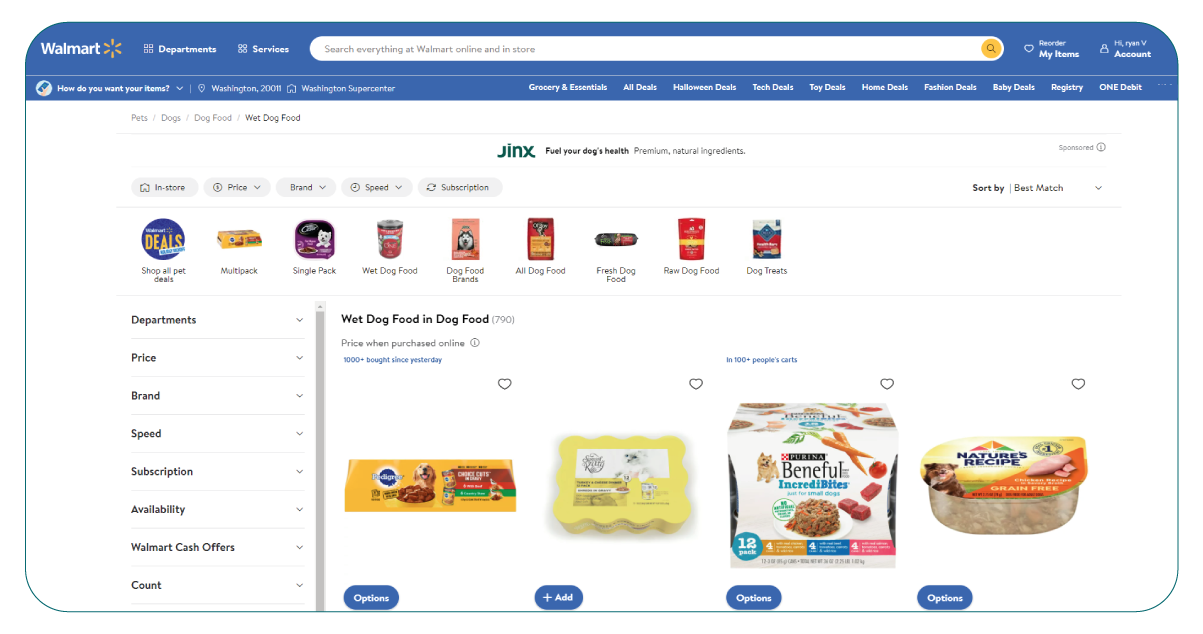
Walmart's website features various pet food categories, including dry food, wet food, treats, and supplements. Decide which categories you want to scrape data from.
Step 3: Start Scraping
Here's how you can scrape pet food data from Walmart:
A. Inspect the Webpage: Open the Walmart website and navigate to the pet food section. Right-click on a product and select "Inspect" to open the browser's developer tools. It will help you understand the page's structure.
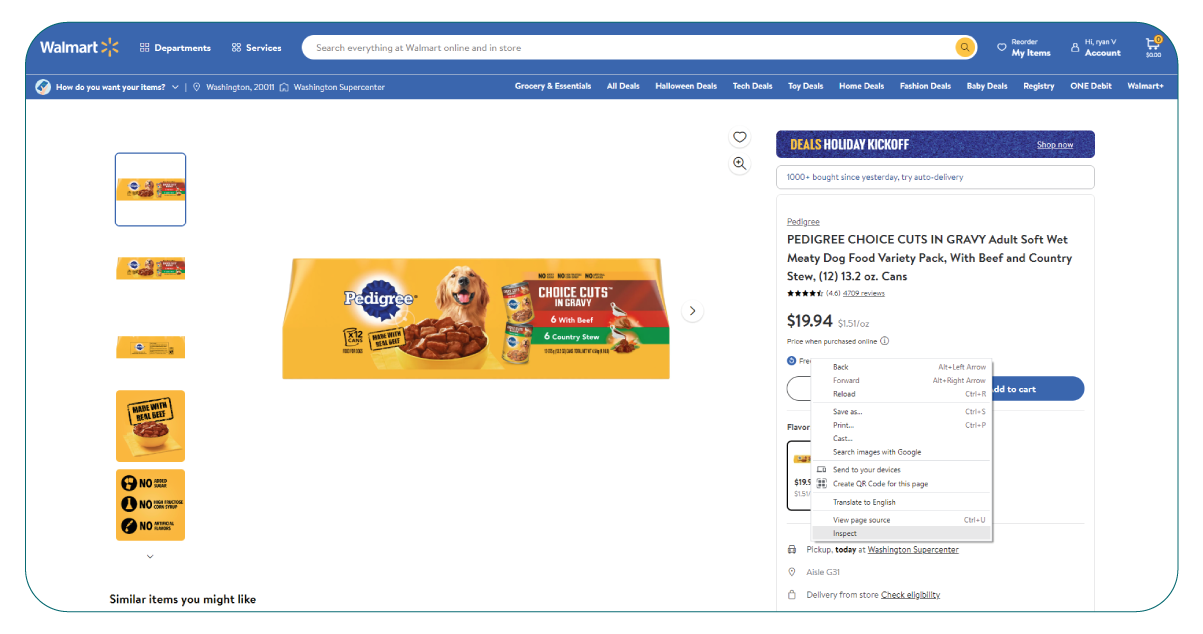
B. Find the Data: Locate the HTML elements that contain the data you want to scrape. It may include product names, prices, descriptions, and customer reviews. Use the element's class or ID attributes to identify them.
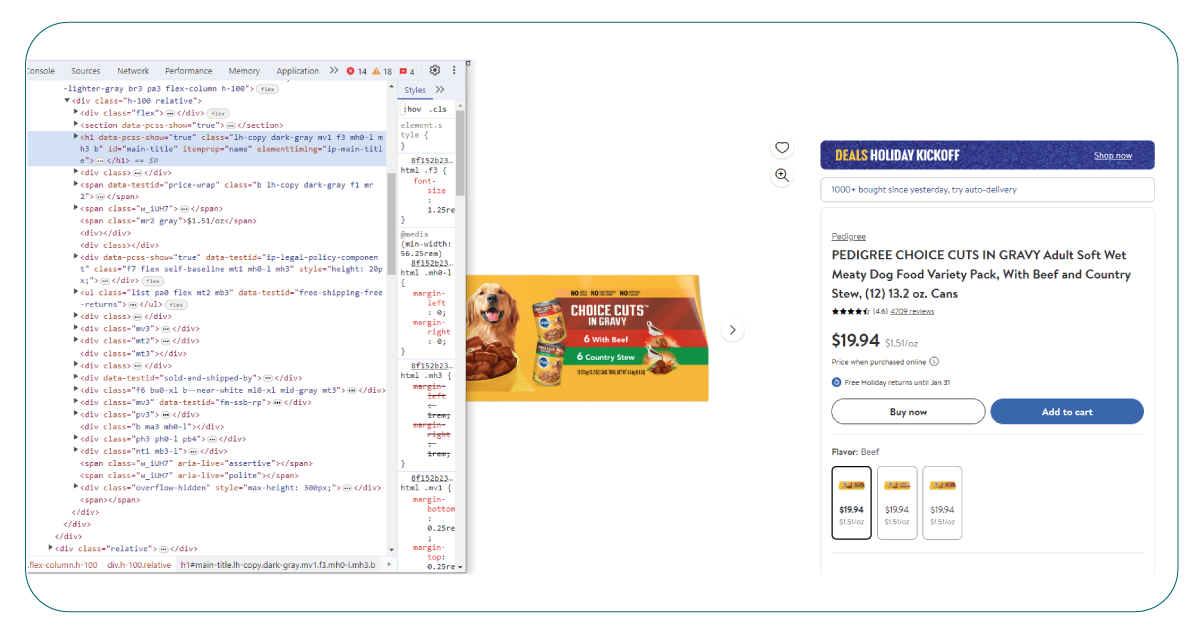
C. Write Your Code: Use a programming language like Python to write a scraping script. Libraries like BeautifulSoup and Requests can help you retrieve and parse the webpage's HTML content. For instance, you can send an HTTP request to the product category's URL and parse the HTML to extract the relevant data.
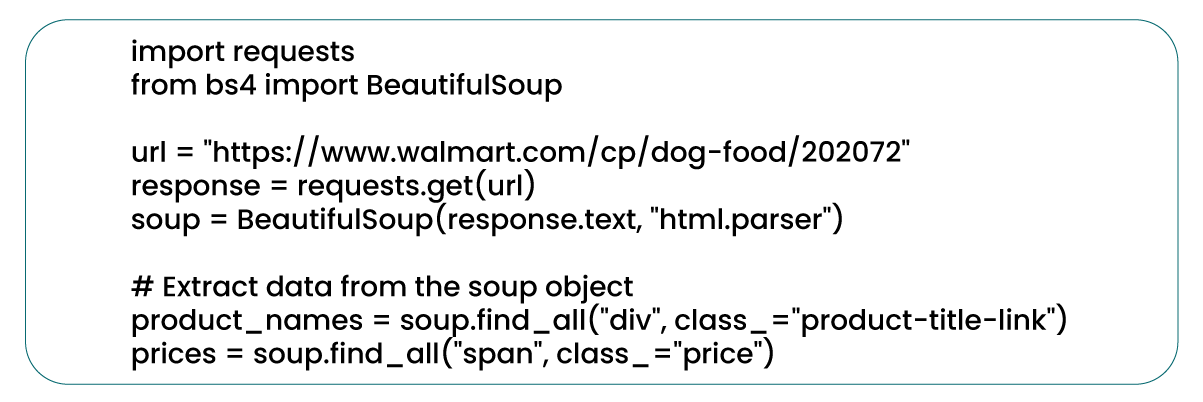
D. Data Cleaning: After scraping, clean the data by removing any unwanted characters or formatting issues using retail data scraping services.
Step 4: Store and Analyze the Data
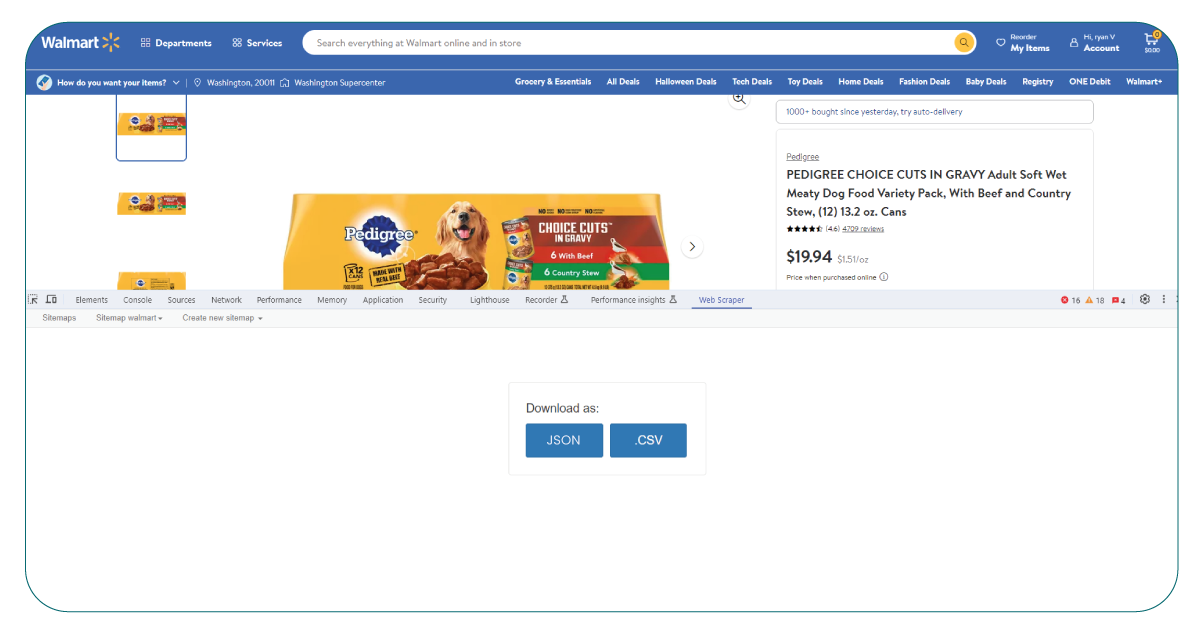
Once you have scraped the pet food data, you can store it in a structured format such as CSV, JSON, or a database. Analyze the data to gain insights into pricing trends, famous brands, and customer reviews.
Step 5: Respect Website Policies
Always be mindful of a website's terms of service and scraping policies. Avoid sending too many requests quickly to prevent IP bans or legal issues. Scraping should be done responsibly and ethically.
Why Scrape Walmart Data?
Scraping Walmart data can be beneficial for various reasons, providing valuable insights for businesses, researchers, and consumers alike. Here are six detailed points explaining why extracting e-commerce data is essential:
- Market Research and Analysis: Walmart is a retail giant with a vast and diverse product catalog. Scraping its data allows businesses to conduct in-depth market research and analysis. You can monitor product trends, identify emerging markets, and understand consumer preferences within different product categories.
- Competitor Analysis: For businesses, understanding the competitive landscape is crucial. By scraping data from Walmart, you can track your competitors' product listings, pricing strategies, and customer reviews. This information aids in benchmarking your offerings and pricing.
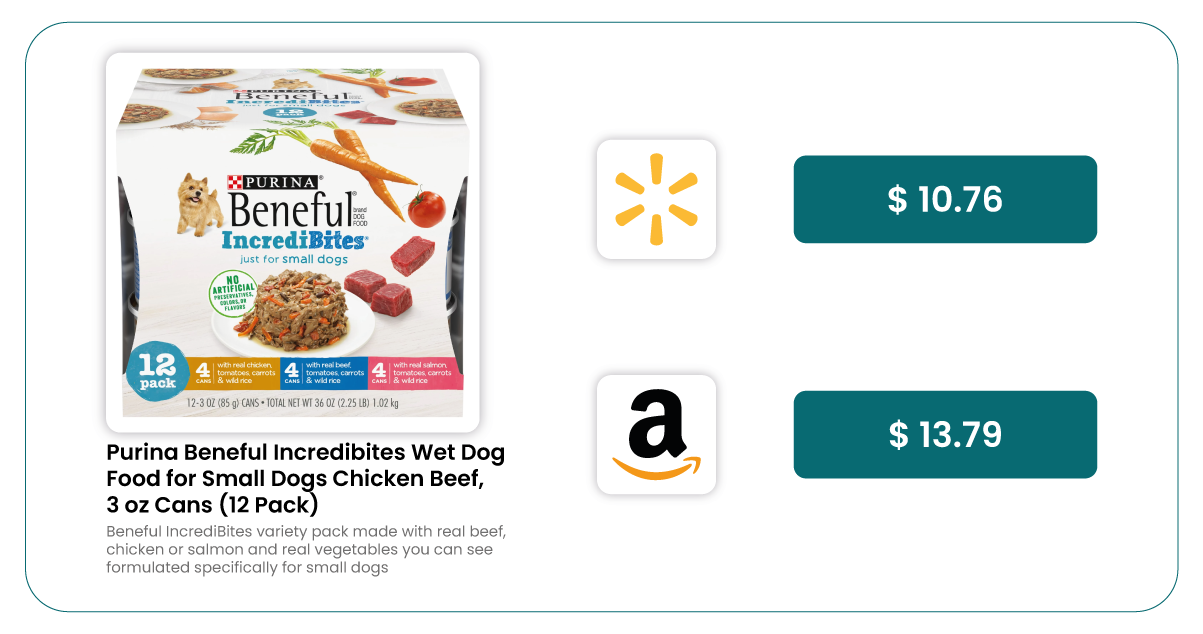
- Price Monitoring and Optimization: Pricing is a critical factor in the retail industry. Scraping Walmart data enables businesses to monitor price changes for specific products or categories. This data can inform pricing strategies, helping companies remain competitive and maximize profitability.
- Inventory Management: Retailers can use scraped data to manage their inventory effectively. Businesses can make informed decisions about stock levels, restocking, and discontinuing products by analyzing product availability and sales trends on Walmart's platform.
- Consumer Insights: Walmart's customer reviews and ratings provide valuable insights into product performance and customer satisfaction. Scraping this data allows businesses to gauge consumer sentiment, identify areas for improvement, and fine-tune their product offerings.
- E-commerce Strategy Development: For e-commerce businesses, scraping Walmart data aids in strategy development. It helps identify which products to sell, set competitive prices, and craft effective marketing campaigns to target Walmart's vast customer base.
At Product Data Scrape, we maintain the highest ethical standards in all operations, including Competitor Price Monitoring Services and Mobile App Data Scraping. With a global presence spanning multiple offices, we consistently deliver exceptional and honest services to meet the diverse needs of our valued customers.
Know More:
https://www.productdatascrape.com/scrape-walmart-pet-food-data.php
